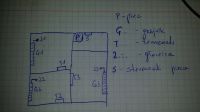Hello,
My own thoughts regarding the control of the gas stove came up with an interesting idea but I can not find such a system. Namely:
In each room I have a head mounted on the radiator which is coupled with a thermometer on the wall. After reaching the set temperature, the thermometer closes the head and sends a signal to the furnace controller. Let's give it 3 rooms, each with a heads and a thermometer. Each user sets an individual temperature. However, let's say that in two rooms the temperature is set and the valves are closed and in one the thermometer requires heating from the gas furnace and such information is transmitted to the controller and later to the furnace - only one room is heated.
In sum:
I need devices and communication system between the head and the thermometer, thermometers and the controller. I want to do everything wired.
Thank you in advance for your help.

My own thoughts regarding the control of the gas stove came up with an interesting idea but I can not find such a system. Namely:
In each room I have a head mounted on the radiator which is coupled with a thermometer on the wall. After reaching the set temperature, the thermometer closes the head and sends a signal to the furnace controller. Let's give it 3 rooms, each with a heads and a thermometer. Each user sets an individual temperature. However, let's say that in two rooms the temperature is set and the valves are closed and in one the thermometer requires heating from the gas furnace and such information is transmitted to the controller and later to the furnace - only one room is heated.
In sum:
I need devices and communication system between the head and the thermometer, thermometers and the controller. I want to do everything wired.
Thank you in advance for your help.



